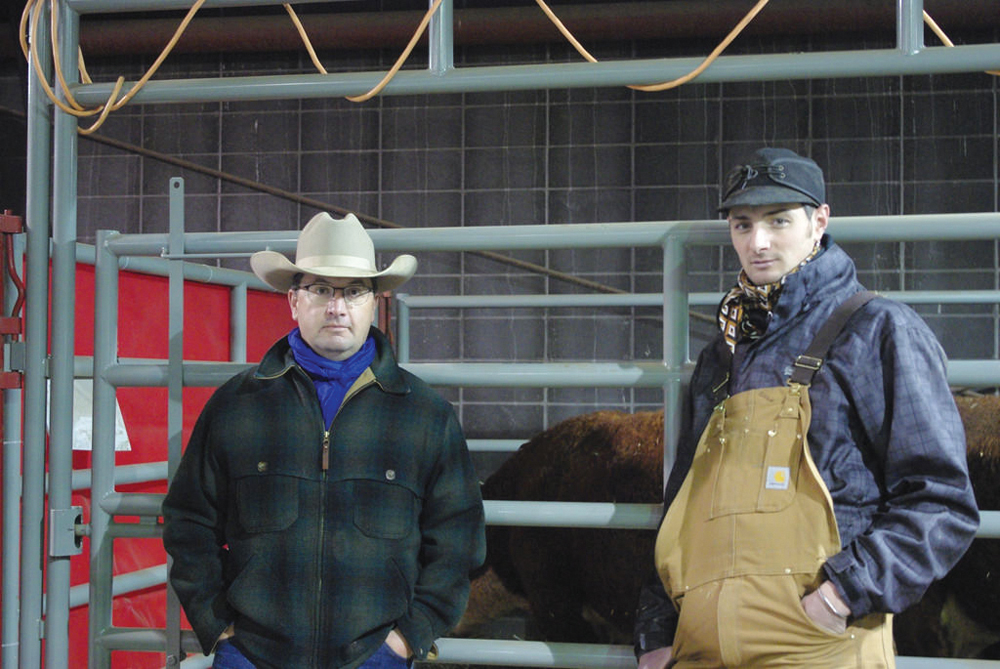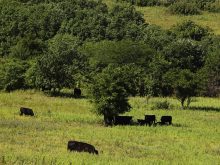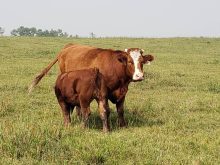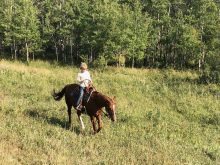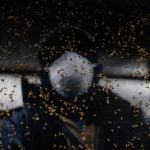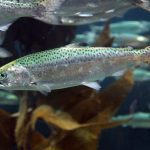Southern Alberta rancher Daniel Doerksen likes a certain type of cow — a functional, easy-keeper that can raise a good calf.
“Our bull selection is based on raising productive females,” Daniel said during an interview at recent western Canadian beef show. Part of that strategy has been to select smaller-framed cows that should be feed efficient, he adds.
“Feed is our most expensive cost throughout the year, so cattle that can convert their feed into pounds most efficiently are going to be the most profitable.”
The Doerksen family has been raising registered Herefords for more than 40 years. Today they run purebred Hereford and Angus herds under Gemstone Cattle, named for the nearby town of Gem in southern Alberta. Daniel’s family also runs a commercial herd and a small feedlot.
Read Also
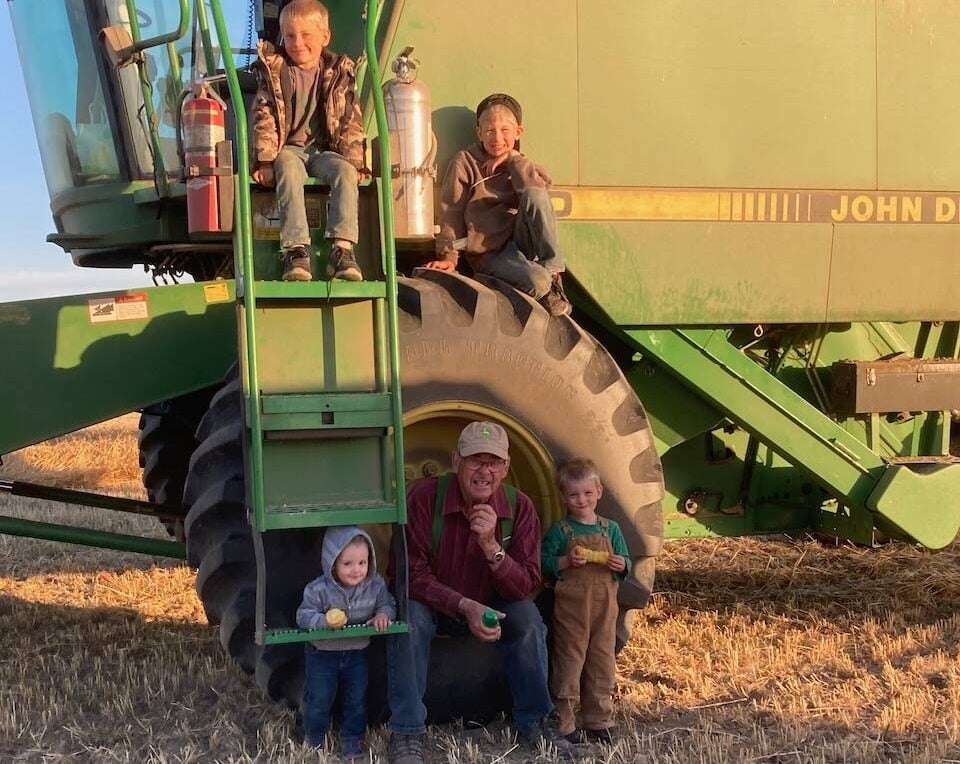
Harvest wraps up and fall work begins
At the Eppich famly ranch in western Saskatchewan, the fall harvest was successful with few breakdowns, cows and calves have been sorted and a new tractor has arrived
Daniel says they put tough selection pressure on their cattle. It turns out that selection pressure has paid off. Early results from residual feed intake trials indicate their Hereford bulls are quite feed efficient.
Measuring feed efficiency
Actually figuring out an animal’s feed efficiency isn’t easily done. Residual feed intake (RFI) is one measurement of feed efficiency. It basically measures how much feed went to an animal’s growth and maintenance, and how much extra was consumed. A negative, or low, RFI, means the animal has eaten less than expected, and is feed efficient.
RFI is a heritable trait and doesn’t influence other traits. That means producers could select for it without affecting other desirable traits. According to the Canadian Hereford Association’s website, selecting for RFI could cut maintenance costs by nine to 10 per cent. Feed intake could drop 10 to 12 per cent. Methane emissions and manure could also drop substantially.
To test whether their cattle were, in fact, feed efficient, the Doerksens have been enrolling their Hereford bulls in RFI trials run by the Canadian Hereford Association for the last two years.
Dan says they were “really happy” with the early results from the Canadian Hereford Association’s trials. That research “found our cattle appear to be above breed average for RFI,” he says. Gemstone Cattle entered 26 bulls in the trials, and 23 ranked in the top 18 per cent for low RFI.
The trials revealed a 1.73 lbs. per day gap in feed consumption between the most and least efficient bulls. The Canadian Hereford Association notes that if feed costs $0.065 per lb., the least efficient bull would cost $40 more to feed each year.
The Hereford Association’s project included three years of RFI trials at Cattleland Feedyards. Researchers assessed RFI in over 1,000 Hereford bulls provided by 63 beef producers during the trials. Each trial included 77 days of testing, plus a 21-day warmup period for the bulls. GrowSafe bunks measured feed intake of individual animals through their I.D. tags.
Researchers collected data including weight, hip height, and ultrasound results for marbling score, rib-eye area and backfat thickness.
The Canadian Hereford Association trial was funded by the Natural Sciences and Engineering Council. Other partners in the RFI project included the University of Alberta, Livestock Gentec, Alberta Agriculture and Forestry, Cattleland Feed Yards, and Olds College.
Next steps
The research trial has wrapped, but the Canadian Hereford Association is facilitating another year of RFI testing for interested Hereford breeders. Daniel plans to enrol Hereford bulls in the RFI trials. He says the family would also like to test their Angus herd, for their own knowledge.
But there is a cost to RFI testing. During the research program, producers didn’t have to pick up as much of the cost, Daniel said, although they still had to pay to enrol bulls. Now that that trial is done, producers will have to pay about $450 per head to test bulls. That includes 104 days of feeding, bedding and the testing itself. The Alberta Livestock and Meat Agency is covering the HD Genotype Analysis, which would come to $110 per head.
Right now EPDs are available on performance-tested animals and some of their relatives, Dr. John Crowley writes via email. Crowley and Dr. John Basarab are now creating genomically enhanced EPDs based on results of the three-year trial. The genomically-enhanced EPDs, which are more accurate than regular EPDs, should be completed early in the new year, Crowley says.
Researchers are also working on cost-effective RFI testing. They’re validating trial protocols so they can shorten the test period. That way, researchers can test more animals every year, and cut the test cost per animal, Crowley explains.
Researchers are also genotyping all animals that go through the trials. This will keep the prediction equations valid and up to date, says Crowley. Phenotypic testing, such as weight gain or marbling, will still be needed, but only on a relatively small proportion of animals.
The science is basically here for producers to submit hair samples for genomic predictions. Crowley says they’re validating the prediction process, to make sure those genomic predictions are accurate.
“Of course, RFI is not everything. It needs to be selected on in tandem with a suite of other traits,” says Crowley.


